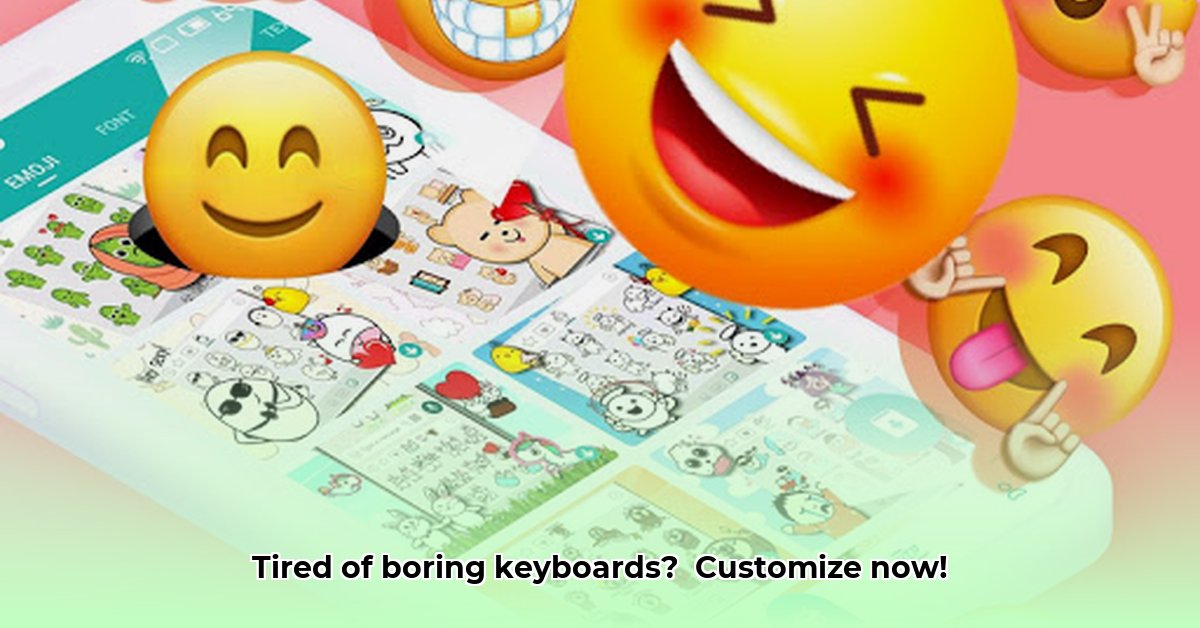
Are you tired of the same old keyboard? Yearning for a typing experience as unique as you are? Kika Keyboard promises a customizable typing adventure, boasting thousands of themes, integrated widgets, and a range of typing features. But does this keyboard live up to the hype? This review dives deep into Kika Keyboard, exploring its strengths and weaknesses to help you decide if it's the right fit for your needs.
A Kaleidoscope of Customization: Themes, Fonts, and More
Kika Keyboard's standout feature is its extensive customization options. With over 10,000 themes available, you'll find a design to match any mood or style. Beyond themes, you can personalize fonts, emojis, stickers, and GIFs, creating a truly unique typing experience. This level of customization is a significant advantage over competitors like Gboard and SwiftKey, offering a level of personalization rarely seen. However, this vast selection might initially feel overwhelming to some users.
Beyond Aesthetics: Typing Features and Widget Integration
Kika Keyboard offers a solid suite of typing features beyond its visual appeal. Slide typing, one-handed mode, voice input, and auto-correction are all present and generally function well. The app learns your typing habits, improving auto-correction over time. However, the effectiveness of these features is comparable to those found in Gboard and SwiftKey; none stand out as revolutionary.
A unique feature is the integration of widgets directly onto the keyboard. This allows for quick access to information such as calendar appointments, weather updates, or notes, without leaving the keyboard. While innovative, the long-term utility and potential cluttering of the typing space remain to be seen. Does the convenience outweigh the potential distraction? This is a crucial consideration.
Privacy Concerns: Transparency and Data Collection
A significant area requiring scrutiny is Kika Keyboard's approach to user privacy. While the app states that typed data is primarily used for predictive text and only with user permission, the lack of readily available and easily understandable privacy policy details raises concerns. The level of transparency here is less than ideal compared to competitors like Gboard, which are known for their relatively transparent data handling practices. Users should carefully review the privacy policy before installing the app.
Comparative Analysis: Kika vs. Gboard and SwiftKey
To better understand Kika Keyboard's position in the market, let's compare it to leading competitors:
| Feature | Kika Keyboard | Gboard | SwiftKey |
|---|---|---|---|
| Theme Options | 10,000+ | Hundreds | Hundreds |
| Widget Support | Yes | No | No |
| One-Handed Mode | Yes | Yes | Yes |
| Voice Input | Yes | Yes | Yes |
| Privacy Policy | Needs More Transparency | Relatively Transparent | Relatively Transparent |
Kika clearly differentiates itself through its extensive customization and unique widget integration. However, Gboard and SwiftKey maintain advantages in terms of seamless integration with other Google services and strong predictive text capabilities, respectively.
The Verdict: Is Kika Keyboard Worth Downloading?
Kika Keyboard offers a compelling proposition for users who prioritize extensive customization and widget functionality. The sheer number of themes and personalization options is unparalleled. However, concerns remain regarding the transparency of its data collection practices. Users who value extensive customization above all else will likely find Kika to be a rewarding experience. Those who prioritize simplicity, seamless integration, and robust privacy protocols might find Gboard or SwiftKey better suited to their needs. Ultimately, the decision depends on your individual priorities.
⭐⭐⭐⭐☆ (4.8)
Download via Link 1
Download via Link 2
Last updated: Friday, May 09, 2025